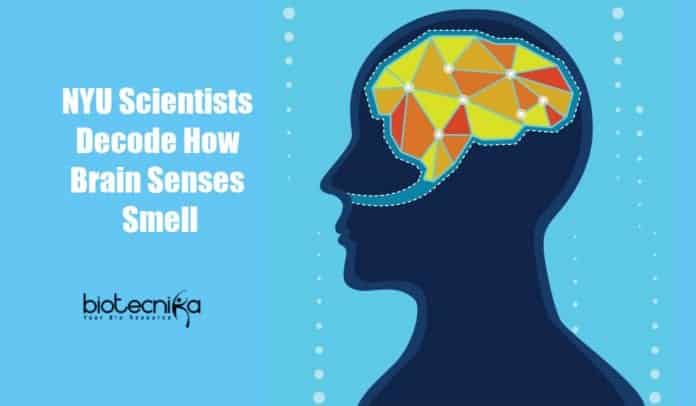NYU Scientists Decode How Brain Senses Smell
How mammalian brains perceive smell and how they distinguish one odor from another has been identified by researchers. Scientists from NYU Grossman School of Medicine created an electrical signature in mice for the first time, which is perceived as an odor in the olfactory bulb- the brain’s smell-processing center, even though the odor does not exist.
Scientists were able to manipulate the order and timing of related nerve signaling since the odor-simulating signal was human-made, and they could identify which changes were most important to the ability of mice to accurately identify the “synthetic smell.”
Edmund Chong, MS, a doctoral student at NYU Langone Health, who led the study, said its complicated to decode how the brain identifies odors because the most important aspects of individual smells are yet to discover. For example, in the case of vision, the brain can identify people based on visual cues. For smell, these distinguishing features recorded by the brain remain unidentified.
According to the previous studies, receptor cells lining the nose are triggered by airborne molecules linked to scents, and it sends electric signals to glomeruli, the nerve-ending bundles in the bulb, and then to neurons
.For each smell, the order and timing of glomeruli activation are unique. How an animal perceives, remembers, and reacts to smell is controlled by signals transmitted to the brain cortex. But it’s been challenging to precisely track a single smell signature across several types of neurons since the scents vary with time, and they mingle with others.
To study how the brain senses smell, researchers used a technique called optogenetics to activate brain cells by shining light on them. They light-activated six glomeruli and trained the mice to recognize the signal generated by that. The signal resembled a pattern evoked by a smell. They were given water only when they identified the correct smell and pushed a lever.
Researchers studied how the change in timing and mix of glomeruli impacted a mouse’s perception as reflected in the behavior, the accuracy with which it acted on the synthetic odor signal to get the reward.
The timing of activation of glomeruli worked like notes in a melody. By controlling which glomeruli and receptors were activated in the mice, scientists were able to sift through many variables and identify which odor features stood out.
Using this technique, researchers were able to examine the minimum number and kind of receptors needed by the olfactory bulb to identify a particular smell, said Dmitry Rinberg, a senior investigator and neurobiologist. The mice have more than 12,00 different types of odor receptors while humans have only 350, he added.
This is the first time a code is identified for how the brain converts sensory information to sense smell. The study helps to better understand how the brain extracts sensory information to evoke behavior.
































